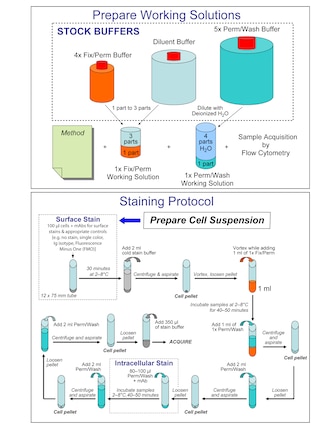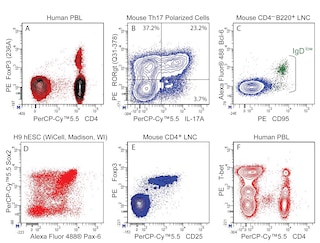-
Reagents
- Flow Cytometry Reagents
-
蛋白质印迹试剂
- 免疫分析 试剂
-
Single-Cell Multiomics Reagents
- BD® AbSeq Assay
- BD Rhapsody™ 附件试剂盒
- BD® Single-Cell Multiplexing Kit
- BD Rhapsody™ Targeted mRNA Kits
- BD Rhapsody™ Whole Transcriptome Analysis (WTA) Amplification Kit
- BD Rhapsody™ TCR/BCR Profiling Assays
- BD® OMICS-Guard Sample Preservation Buffer
- BD Rhapsody™ ATAC-Seq Assays
- BD Rhapsody™ TCR/BCR Next Multiomic Assays
-
Functional Assays
-
显微成像试剂
-
Cell Preparation and Separation Reagents
-
- BD® AbSeq Assay
- BD Rhapsody™ 附件试剂盒
- BD® Single-Cell Multiplexing Kit
- BD Rhapsody™ Targeted mRNA Kits
- BD Rhapsody™ Whole Transcriptome Analysis (WTA) Amplification Kit
- BD Rhapsody™ TCR/BCR Profiling Assays
- BD® OMICS-Guard Sample Preservation Buffer
- BD Rhapsody™ ATAC-Seq Assays
- BD Rhapsody™ TCR/BCR Next Multiomic Assays
- China (Chinese)
-
更改国家/语言
Old Browser
Looks like you're visiting us from {countryName}.
Would you like to stay on the current country site or be switched to your country?


.png)

Multiparameter flow cytometric analysis of AhR expression Top Plots - AhR expression in human peripheral blood mononuclear cells. PBMCs were fixed and permeabilized with the BD Pharmingen™ Transcription Factor Buffer Set (Cat No. 562574/562725) and stained with either PE Mouse IgG1, κ Isotype Control (Cat. No. 554680; Left Plot) or PE Mouse Anti-AhR antibody (Cat. No. 565711; Right Plot). Bottom Plots - AhR expression in mouse splenic leucocytes. Mouse splenic leucocytes were similarly fixed, permeabilized, stained, and analyzed. Two-parameter flow cytometric contour plots showing the correlated expression of AhR (or Ig Isotype control staining) versus side light-scatter (SSC-A) signals were derived from gated events with the forward and side light-scatter characteristics of intact leucocyte populations. Flow cytometric analysis was performed using a BD LSRFortessa™ X-20 Flow Cytometer System.
.png)

BD Pharmingen™ PE Mouse Anti-AhR
.png)
监管状态图例
未经BD明确书面授权,严禁使用未经许可的任何商品。
准备和存储
商品通知
- This reagent has been pre-diluted for use at the recommended Volume per Test. We typically use 1 × 10^6 cells in a 100-µl experimental sample (a test).
- Please refer to www.bdbiosciences.com/us/s/resources for technical protocols.
- Caution: Sodium azide yields highly toxic hydrazoic acid under acidic conditions. Dilute azide compounds in running water before discarding to avoid accumulation of potentially explosive deposits in plumbing.
- For fluorochrome spectra and suitable instrument settings, please refer to our Multicolor Flow Cytometry web page at www.bdbiosciences.com/colors.
- An isotype control should be used at the same concentration as the antibody of interest.
配套商品






The T49-550 monoclonal antibody recognizes the human Aryl Hydrocarbon Receptor (AhR), which is also known as Aromatic Hydrocarbon Receptor, and cross-reacts with the mouse AhR. AhR is a member of basic helix-loop-helix transcription factors (Class E basic helix-loop-helix protein 76, bHLHe76). AhR can bind to a variety of endogenous and exogenous ligands including tryptophan metabolites, bacterial pigments, plant flavonoids, synthetic polycyclic aromatic hydrocarbons, or dioxin-like compounds. Upon ligand binding, cytoplasmic AhR undergoes conformational changes and translocates into the nucleus to induce gene transcription. AhR is widely expressed in mammalian tissues with the highest expression levels in the liver and lung. A number of studies suggest that AhR regulates inflammation mainly by attenuating the production of inflammatory cytokines by dendritic cells and macrophages. In addition, AhR can regulate the expansion or effector functions of Th17 cells, IL-10-secreting regulatory T (Tr1) cells, and subsets of intraepithelial lymphocytes (IEL) and innate lymphoid cells (ILC), keratinocytes, and Langerhans cells.

研发参考 (8)
-
Denison MS, Nagy SR. Activation of the aryl hydrocarbon receptor by structurally diverse exogenous and endogenous chemicals. Annu Rev Pharmacol Toxicol. 2003; 43(309):334. (Biology). 查看参考
-
Gonzalez FJ, Fernandez-Salguero P. The aryl hydrocarbon receptor: studies using the AHR-null mice. Drug Metab Dispos. 1998; 26(12):1194-1198. (Biology). 查看参考
-
Henry EC, Bemis JC, Henry O, Kende AS, Gasiewicz TA. A potential endogenous ligand for the aryl hydrocarbon receptor has potent agonist activity in vitro and in vivo. Arch Biochem Biophys. 2006; 450(1):67-77. (Biology). 查看参考
-
Ho PP, Steinman L. The aryl hydrocarbon receptor: a regulator of Th17 and Treg cell development in disease. Cell Res. 2008; 18(6):605-608. (Biology). 查看参考
-
Ramsay G, Cantrell D. Environmental and metabolic sensors that control T cell biology. Front Immunol. 2015; 6(1):8. (Biology). 查看参考
-
Simones T, Shepherd DM. Consequences of AhR activation in steady-state dendritic cells. Toxicology. 2011; 119(2):293-307. (Biology). 查看参考
-
Stockinger B, Di Meglio P, Gialitakis M, Duarte JH. The aryl hydrocarbon receptor: multitasking in the immune system. Annu Rev Immunol. 2014; 32(403):432. (Biology). 查看参考
-
Veldhoen M, Hirota K, Christensen J, O'Garra A, Stockinger B. Natural agonists for aryl hydrocarbon receptor in culture medium are essential for optimal differentiation of Th17 T cells. J Exp Med. 2009; 206(1):43-49. (Biology). 查看参考
Please refer to Support Documents for Quality Certificates
Global - Refer to manufacturer's instructions for use and related User Manuals and Technical data sheets before using this products as described
Comparisons, where applicable, are made against older BD Technology, manual methods or are general performance claims. Comparisons are not made against non-BD technologies, unless otherwise noted.
For Research Use Only. Not for use in diagnostic or therapeutic procedures.
Report a Site Issue
This form is intended to help us improve our website experience. For other support, please visit our Contact Us page.